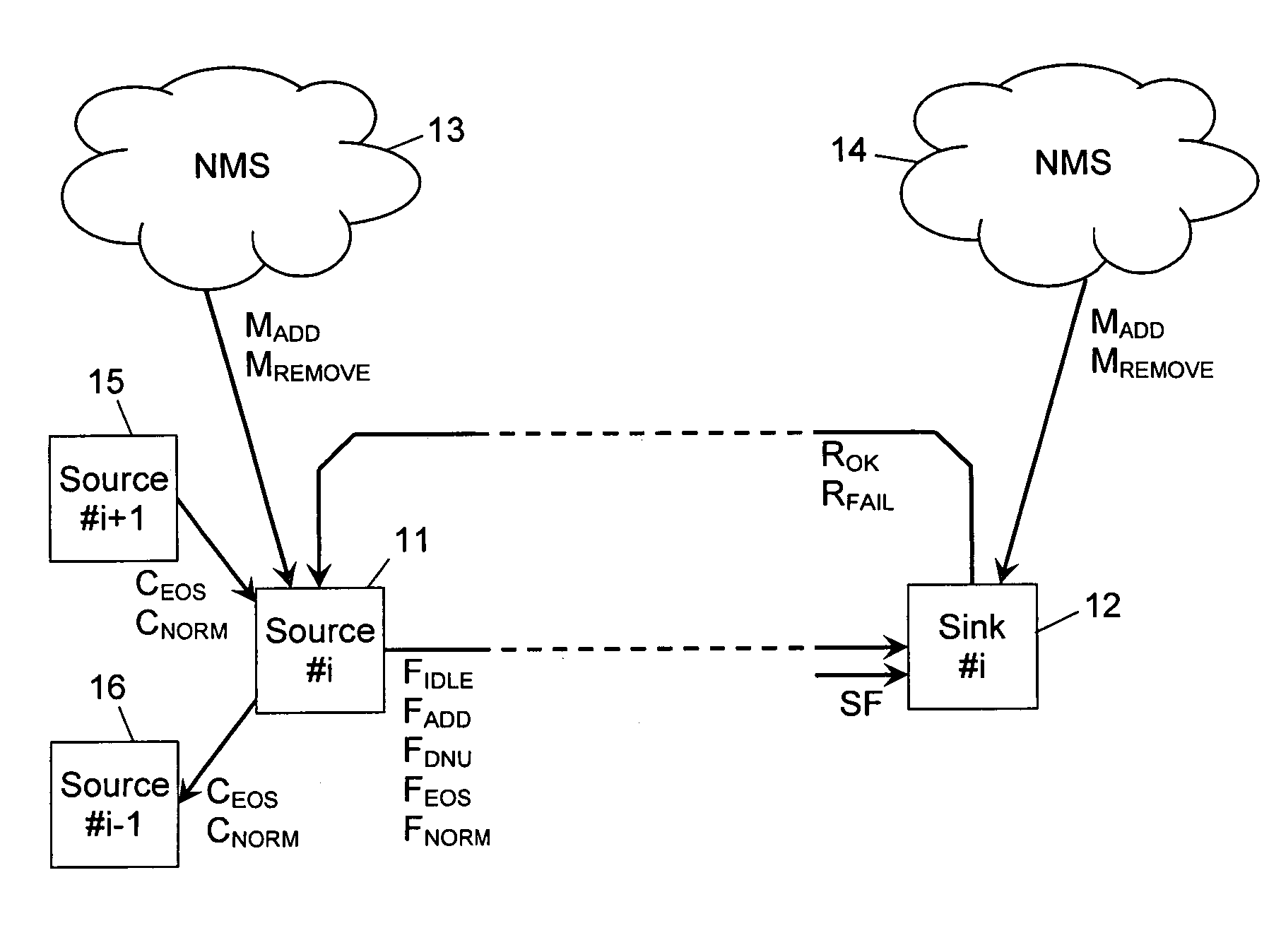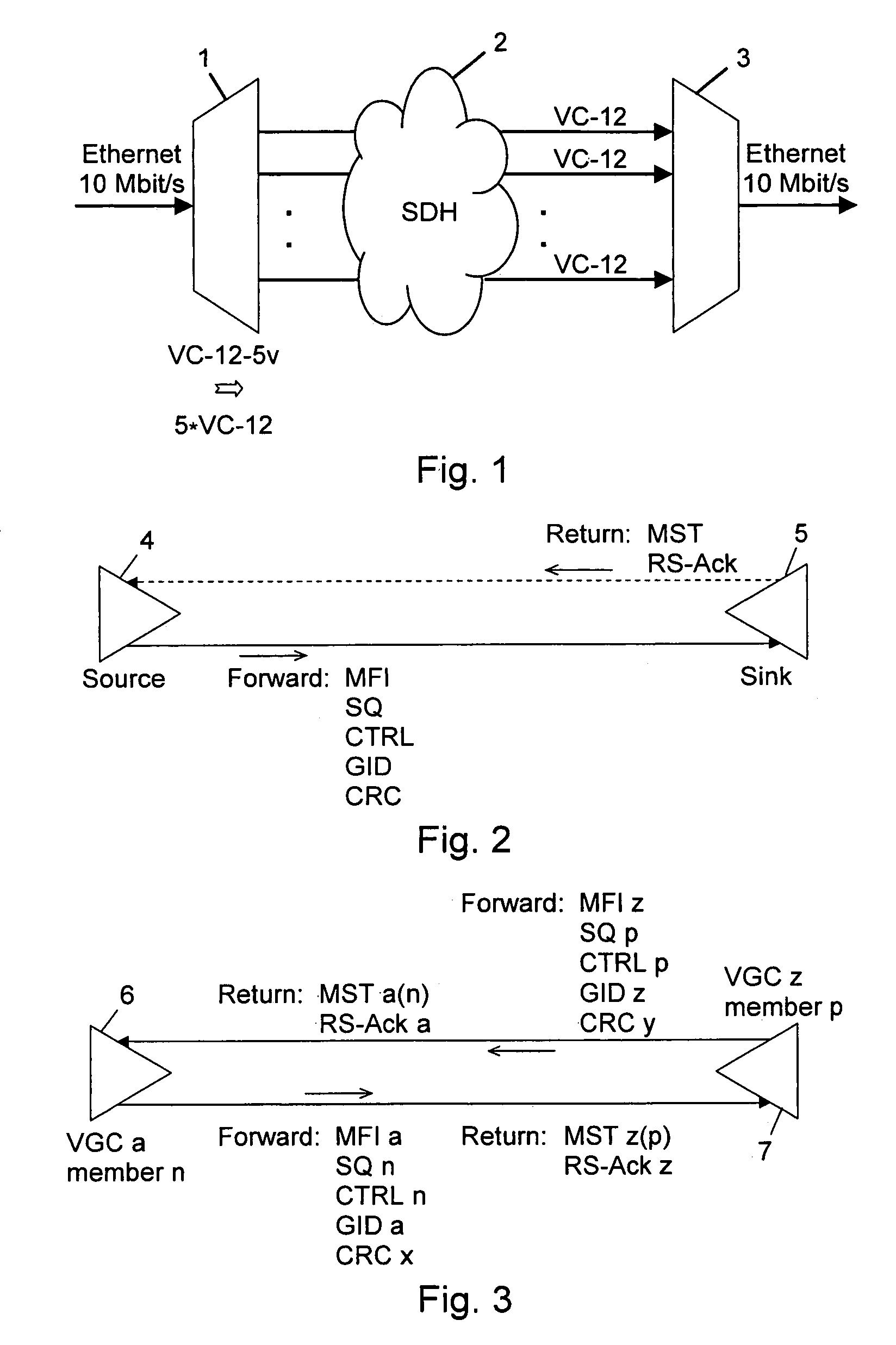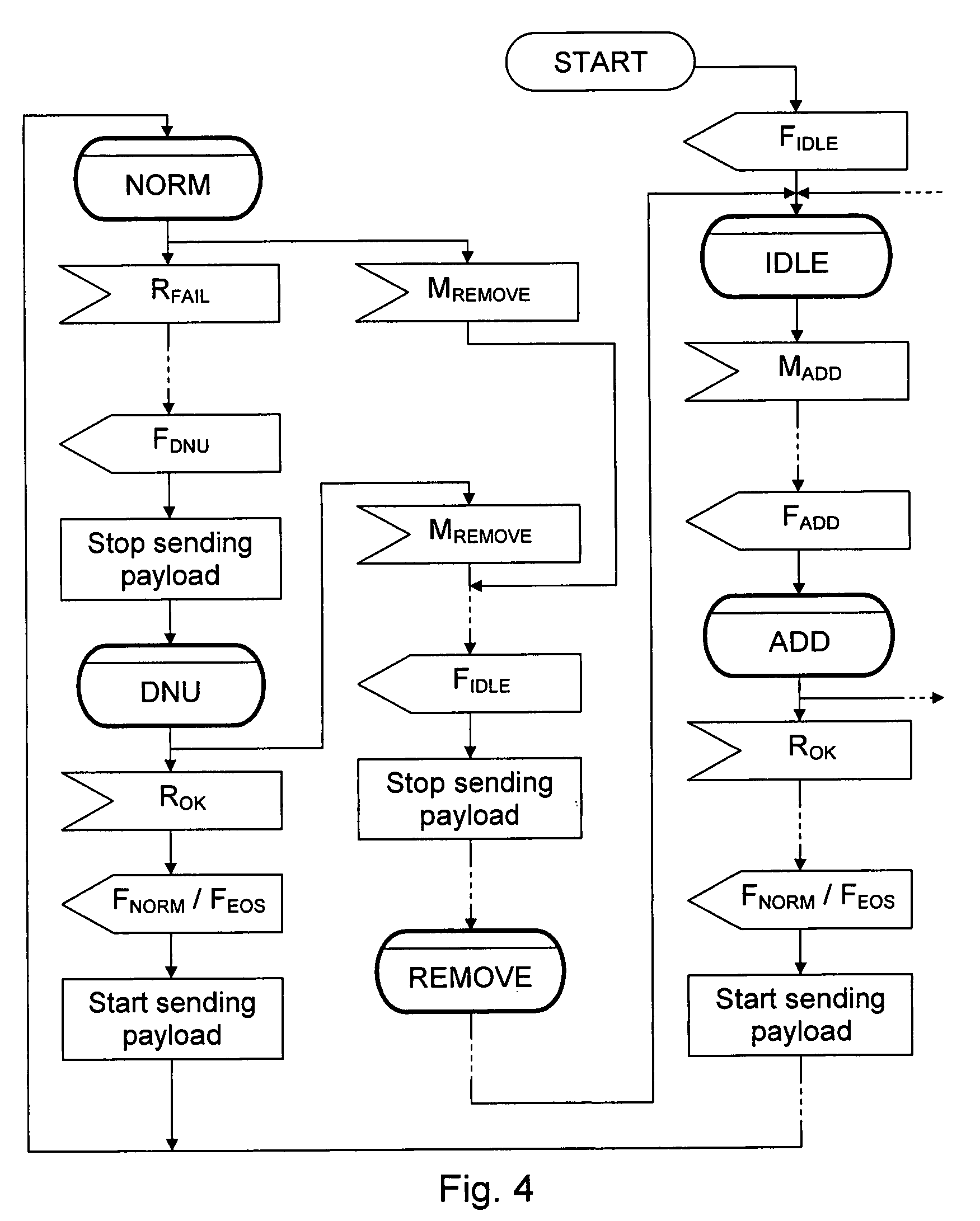Reduction of the transport capacity of a virtual concatenation group
a technology of virtual concatenation and transport capacity, applied in the field can solve the problems of not being able to effectively utilize the possible bit rate of virtual containers, not always possible, hit to the reconstructed data, etc., and achieve the effect of reducing the transport capacity of virtual concatenation group
- Summary
- Abstract
- Description
- Claims
- Application Information
AI Technical Summary
Benefits of technology
Problems solved by technology
Method used
Image
Examples
Embodiment Construction
[0041]A description of preferred embodiments of the invention follows.
[0042]In FIG. 1 an example of the use of virtual concatenation is illustrated. Ethernet data of 10 Mbit / s are transmitted from one network element 1 through an SDH (Synchronous Digital Hierarchy) network 2 to another network element 3. For illustrational purposes the network elements are here shown as multiplexers / demultiplexers, although they comprise much additional circuitry. The 10 Mbit / s data are mapped into five VC-12 containers constituting a VCG (Virtual Concatenation Group), which can be denoted as VC-12-5v. The five containers are called the members of the VCG. As illustrated, the five VC-12 containers are transmitted as individual containers through the network. In the receiving network element 3 the containers of the VCG can be recognized on their overhead, and a differential delay caused by difference in optical path length can be compensated, so that the data of the five containers can be combined ag...
PUM
 Login to View More
Login to View More Abstract
Description
Claims
Application Information
 Login to View More
Login to View More - R&D
- Intellectual Property
- Life Sciences
- Materials
- Tech Scout
- Unparalleled Data Quality
- Higher Quality Content
- 60% Fewer Hallucinations
Browse by: Latest US Patents, China's latest patents, Technical Efficacy Thesaurus, Application Domain, Technology Topic, Popular Technical Reports.
© 2025 PatSnap. All rights reserved.Legal|Privacy policy|Modern Slavery Act Transparency Statement|Sitemap|About US| Contact US: help@patsnap.com



